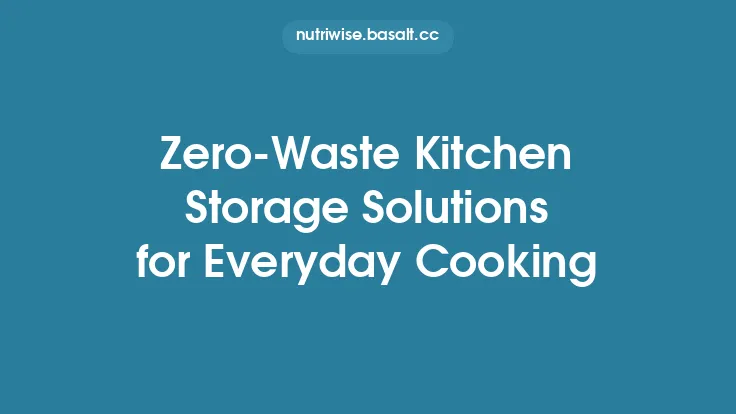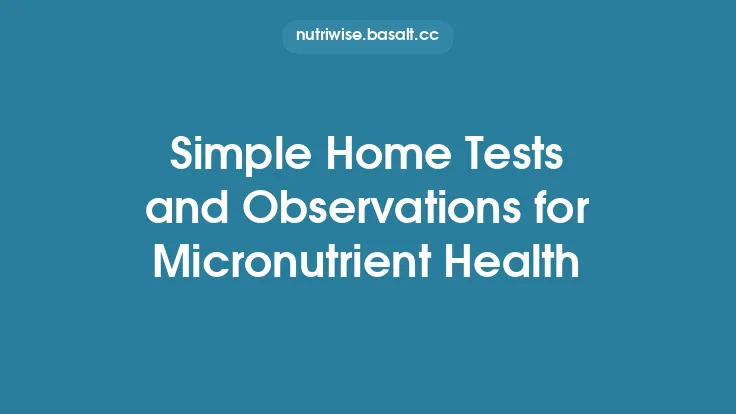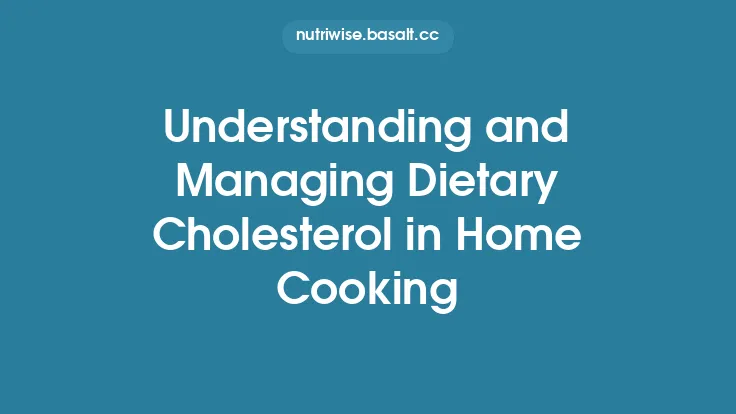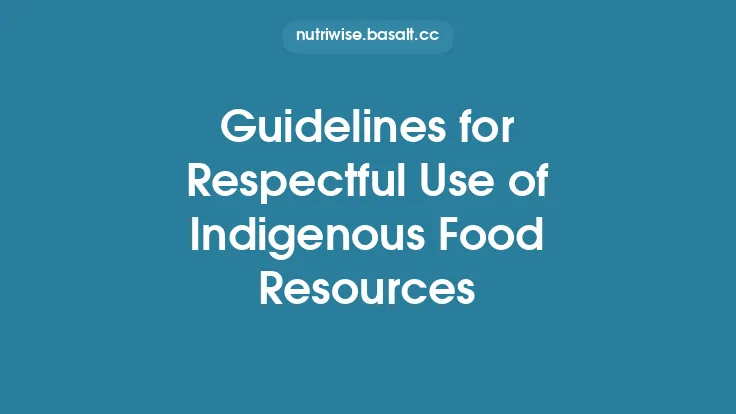Biodegradable packaging has moved from niche laboratory experiments to everyday kitchen shelves, offering a promising alternative to conventional plastics that linger for centuries. For home cooks and eco‑conscious consumers, understanding what these materials are, how they behave, and how to use them responsibly is essential. This guide breaks down the science, the practicalities, and the future of biodegradable packaging so you can make informed choices for your pantry, lunchbox, and leftovers.
The Main Families of Biodegradable Packaging Materials
| Material | Primary Source | Typical Applications | Degradation Pathway |
|---|---|---|---|
| Polylactic Acid (PLA) | Fermented plant sugars (corn, sugarcane, tapioca) | Clear trays, clamshells, cutlery, film wraps | Industrial compost (≥55 °C, high humidity) |
| Polyhydroxyalkanoates (PHA) | Bacterial fermentation of organic feedstock | Flexible films, rigid containers, foam | Industrial compost; some home compost under optimal conditions |
| Starch‑Based Polymers | Corn, potato, or wheat starch blended with biodegradable polyesters | Loose‑fill peanuts, trays, shopping bags | Home compost (moderate temperature) and soil microbes |
| Cellulose‑Based Materials | Wood pulp, cotton, or agricultural residues | Transparent films, paperboard, coated cartons | Aerobic soil microbes; readily compostable |
| Bagasse (Sugarcane Fiber) | Pressed pulp from sugarcane processing | Take‑away containers, plates, bowls | Home compost (dry) and industrial compost |
| Mushroom Mycelium | Grown from fungal mycelium on agricultural waste | Rigid trays, protective inserts | Soil microbes; fully compostable in home bins |
| Chitosan (Derived from Crustacean Shells) | De‑acetylated chitin from shrimp/crab shells | Antimicrobial films, coating for fresh produce | Soil microbes; biodegradable in both home and industrial settings |
Each family brings a unique blend of mechanical strength, barrier properties, and degradation requirements. Selecting the right one depends on the food type, storage conditions, and the disposal infrastructure available to you.
How Biodegradation Works: From Polymer to Soil
Biodegradation is a multi‑step process driven by microorganisms (bacteria, fungi, actinomycetes) that enzymatically break polymer chains into water, carbon dioxide (or methane in anaerobic conditions), and biomass. The key variables influencing the rate are:
- Molecular Structure – Linear, amorphous polymers (e.g., starch) are more accessible to enzymes than highly crystalline ones (e.g., some PHAs).
- Environmental Conditions – Temperature, moisture, oxygen, and pH dictate microbial activity. Industrial compost facilities maintain 55–60 °C and >50 % humidity, accelerating breakdown. Home compost piles often sit at 30–40 °C, slowing the process.
- Additives & Coatings – Plasticizers, barrier layers, or printed inks can hinder microbial access. Certified biodegradable products limit such additives to ensure complete degradation.
- Particle Size & Surface Area – Thin films and shredded materials decompose faster than thick, solid items.
Understanding these mechanisms helps you match material to disposal method. For instance, a PLA clamshell will not break down in a backyard compost bin unless the temperature consistently exceeds 50 °C, whereas a bagasse bowl will fragment within weeks in a typical home compost.
Benefits and Limitations of Biodegradable Packaging at Home
Benefits
- Reduced Persistence – Unlike conventional polyethylene (PE) or polypropylene (PP), biodegradable polymers can return to the carbon cycle within months under proper conditions.
- Lower Fossil‑Based Carbon Footprint – Many are derived from renewable feedstocks, cutting greenhouse‑gas emissions associated with petroleum extraction.
- Potential for Closed‑Loop Composting – When composted correctly, the material contributes organic matter that enriches soil, completing a circular loop.
- Consumer Perception – Visible eco‑labels can reinforce sustainable habits and encourage broader adoption.
Limitations
- Infrastructure Dependency – Not all municipalities accept biodegradable plastics in curbside compost; mis‑routing can lead to landfill disposal where degradation is negligible.
- Performance Trade‑offs – Barrier properties (oxygen, moisture) may be inferior to traditional plastics, affecting shelf life for high‑moisture foods.
- Cost Premium – Production scale and feedstock competition can make biodegradable options 10–30 % more expensive.
- Confusing Terminology – “Compostable,” “biodegradable,” and “bio‑based” are not interchangeable; a product can be bio‑based but not compostable.
Choosing the Right Biodegradable Packaging for Your Kitchen
- Identify the Food Type
- *High‑moisture or oily foods* (e.g., soups, sauces) benefit from PLA or PHA films with a thin barrier coating.
- *Dry snacks or baked goods* can be stored in starch‑based bags or bagasse containers.
- *Fresh produce* may be best wrapped in cellulose‑based films that allow breathability while still being compostable.
- Match Storage Conditions
- *Freezer use*: Only certain PHAs and specially formulated PLA can tolerate –18 °C without becoming brittle.
- *Microwave heating*: Food‑grade PLA is microwave‑safe for short intervals (≤2 min) but may warp; avoid PHA unless labeled microwave‑compatible.
- *Refrigeration*: Most biodegradable films retain flexibility at 4 °C, but check for condensation resistance.
- Check Certification Labels
- Look for EN 13432 (European standard) or ASTM D6400/D6868 (U.S.) which guarantee industrial compostability.
- OK Compost and Seedling logos indicate compliance with home‑compost standards.
- Consider End‑of‑Life Pathways
- If your community offers a commercial compost service, prioritize materials that meet that program’s specifications.
- For home compost, select starch‑based or cellulose‑based options that break down at lower temperatures.
Proper Use and Handling to Maximize Performance
- Seal Correctly – Many biodegradable films are heat‑sealable. Use a low‑temperature impulse sealer (≤120 °C) to avoid melting the polymer.
- Avoid Over‑Loading – Over‑filling containers can cause stress cracks, especially in PLA, which is more brittle than conventional plastics.
- Label Wisely – Use water‑based, soy‑based inks for printing; they degrade alongside the substrate.
- Store Away from Direct Sunlight – UV exposure can accelerate polymer breakdown, leading to premature brittleness.
- Separate from Conventional Plastics – Mixing biodegradable and non‑biodegradable plastics in compost can contaminate the batch, reducing overall degradation efficiency.
End‑of‑Life Options: Composting, Recycling, and Disposal
| Disposal Method | Suitable Materials | Practical Steps |
|---|---|---|
| Industrial Compost | PLA, PHA, certified bagasse, some starch blends | Place in designated compost bin; ensure no metal staples or non‑compostable labels. |
| Home Compost | Starch‑based, cellulose, bagasse, mushroom mycelium | Shred or tear into small pieces; mix with brown (dry) and green (wet) materials; maintain moisture and turn weekly. |
| Recycling (Special Streams) | Certain PLA blends can be recycled with PET in some facilities | Rinse, remove food residue, and place in the “PLA/PET” recycling bin if available. |
| Landfill (Last Resort) | Any biodegradable material | If no compost option exists, landfill disposal is still preferable to conventional plastic due to lower long‑term persistence, but aim to avoid this route. |
Key Tip: Always verify local waste‑management guidelines. Some municipalities accept PLA in the regular organic waste stream, while others require separate collection.
Safety and Regulatory Considerations
- Food‑Contact Approval – In the U.S., the FDA’s 21 CFR Part 177 lists approved biodegradable polymers for direct food contact. In the EU, the EFSA evaluates safety. Choose products that explicitly state compliance.
- Migration Limits – Certain additives (plasticizers, antioxidants) can migrate into food. Certified compostable films are limited to migration levels ≤10 mg/kg food.
- Allergen Awareness – Starch‑based packaging derived from wheat or soy may pose concerns for individuals with severe allergies. Look for “gluten‑free” or “soy‑free” labeling if needed.
- Heat Resistance – Verify temperature ratings before using in ovens, microwaves, or freezers to prevent polymer breakdown and potential leaching.
Cost, Availability, and Where to Buy
- Supermarkets & Specialty Stores – Many large chains now stock PLA containers for deli items and bagasse plates in the ready‑to‑eat aisle.
- Online Marketplaces – Bulk purchases of biodegradable film rolls, PHA containers, and mushroom packaging kits are available on platforms like Amazon, EcoEnclose, and GreenBox.
- Local Co‑ops & Zero‑Waste Shops – Often carry refillable biodegradable bags and reusable containers made from compostable materials.
- Price Range – Expect a 15–25 % premium over standard polyethylene for comparable sizes. Bulk buying and subscription models can reduce per‑unit cost.
Emerging Innovations Shaping the Future
- Hybrid Bio‑Plastics – Blends of PLA with nanocellulose or PHA improve barrier performance while retaining compostability.
- Enzyme‑Embedded Films – Incorporating specific enzymes that activate under moisture to accelerate degradation once the package is discarded.
- Smart Compostable Sensors – Biodegradable RFID tags that change color when the material has fully broken down, helping waste‑management facilities sort streams.
- Carbon‑Negative Production – Companies capturing CO₂ during fermentation of algae or cyanobacteria to produce PHA, resulting in a net reduction of atmospheric carbon.
- Closed‑Loop Home Compost Systems – Compact, temperature‑controlled composters designed to handle PLA and PHA, making industrial‑level conditions accessible to households.
Practical Tips for Transitioning Your Kitchen to Biodegradable Packaging
- Start Small – Replace single‑use sandwich bags with a roll of biodegradable film for lunches.
- Batch Cook with Compostable Containers – Use PLA trays for freezer meals; label with a dry‑erase marker for easy identification.
- Create a Compost Corner – Dedicate a small bin with a lid for biodegradable waste; add a carbon source (shredded newspaper) to speed breakdown.
- Educate Household Members – Post a simple guide near the compost bin outlining which items are acceptable and how to prepare them (e.g., rinse, tear).
- Track Savings – Keep a log of how many conventional plastic items you’ve replaced; this can be motivating and useful for future purchasing decisions.
Closing Thoughts
Biodegradable packaging offers a tangible pathway to reduce the environmental footprint of everyday food storage and transport. By grasping the science behind each material, aligning your choices with local waste‑management infrastructure, and handling the products responsibly, you can enjoy the convenience of modern packaging without the long‑lasting burden of plastic waste. As technology advances and composting facilities expand, the gap between “biodegradable” and “truly composted” continues to narrow—making the shift toward a more sustainable kitchen not just possible, but increasingly practical.





